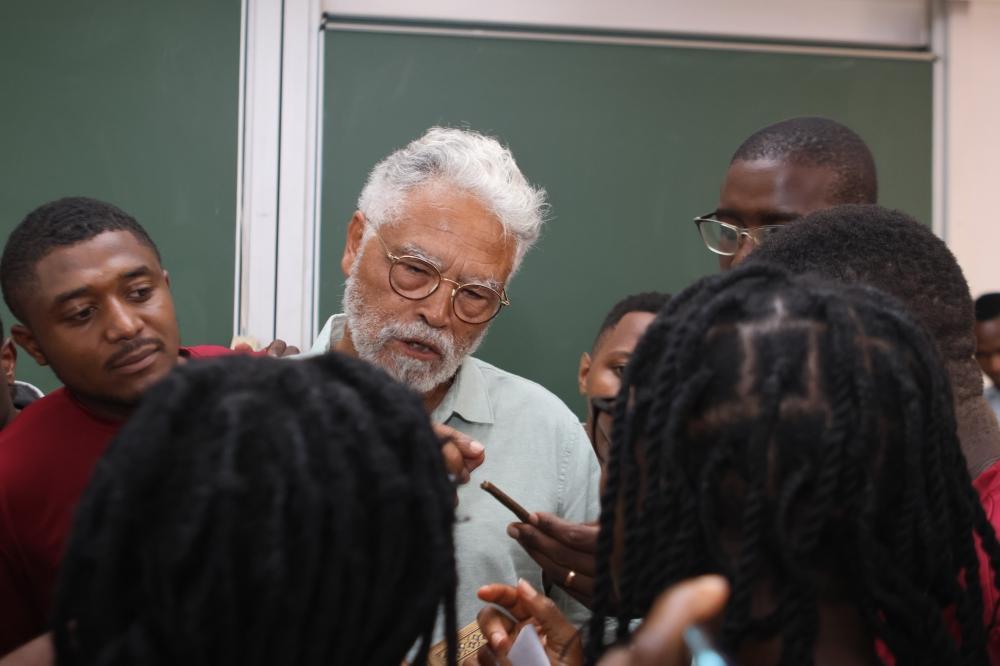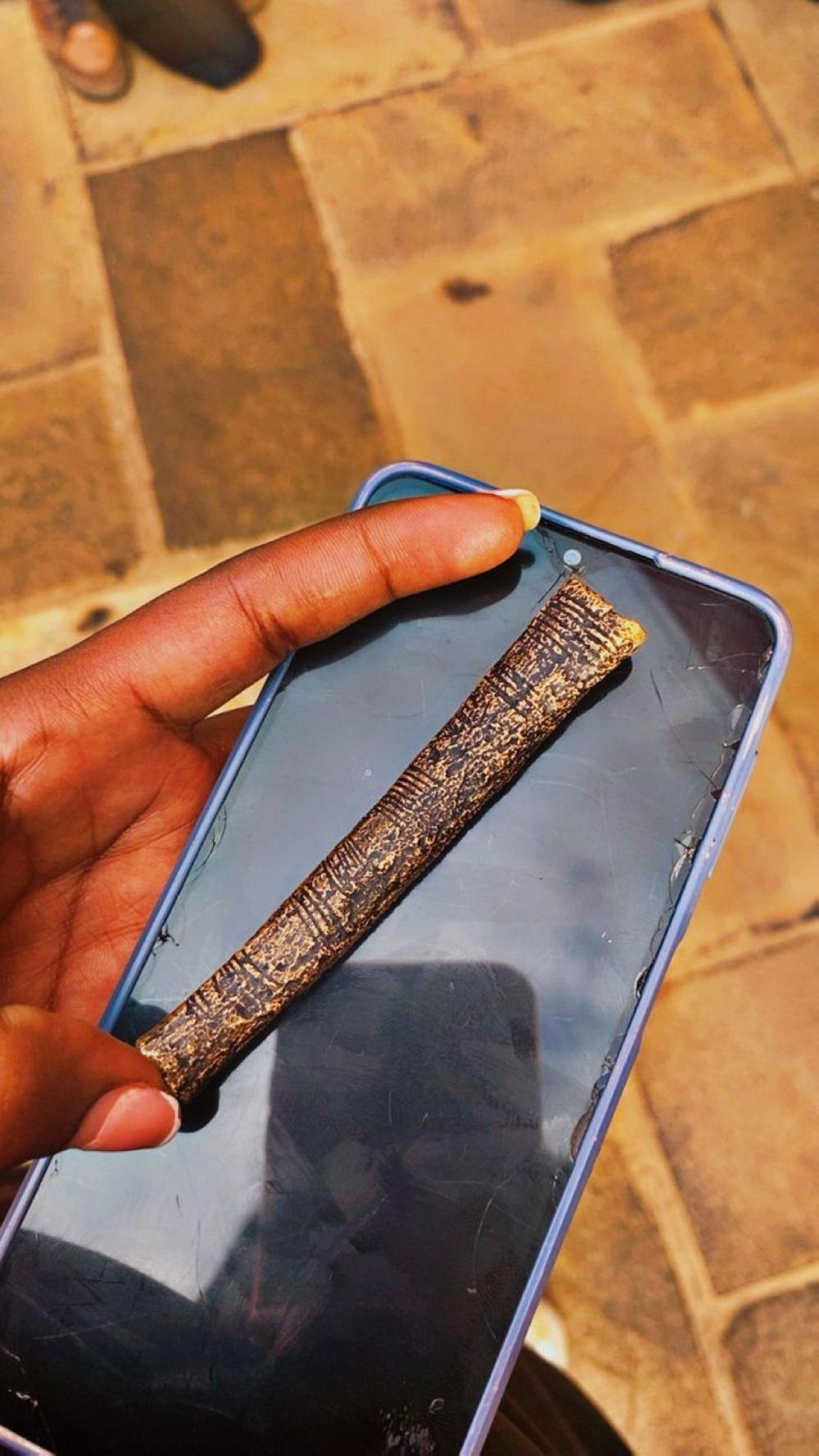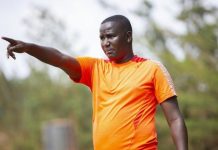Africa-Press – Rwanda. The story of humanity’s pursuit of knowledge spans millennia, from the earliest grasp of mathematical principles to modern explorations of the cosmos. The Ishango Bone, a 20,000-year-old artifact discovered in Africa, represents one of the earliest known tools that demonstrate our ancestors’ understanding of numbers, patterns, and arithmetic.
This ancient piece of history holds a remarkable connection to today’s advanced cosmological theories, where mathematics continues to unlock the deepest mysteries of the universe.
On March 19, this profound journey through time was brought to life in an event organized by the African Institute for Mathematical Sciences (AIMS) and the University of Rwanda’s College of Science and Technology.
Titled Bridging the Ancient and the Cosmic: Insights from the Ishango Bone and the Universe, the event featured Rwandan-Belgian filmmaker and mathematician Georges Kamanayo and renowned cosmologist Prof. Neil Turok, the founder of AIMS, who together explored how the ancient and the cosmic are intertwined by the universal language of mathematics.
The Ishango bone was discovered in the 1950s in the Lake Edward, DR Congo, by Belgian anthropologist Jean de Heinzelin de Braucourt. The bone, which might be a fibula of a baboon or other large mammal, is about 10 cm long and features a series of notches.
Their discussion illuminated humanity’s ongoing quest to decode the fundamental patterns of existence, informed by the small bone and the vast expanse of the universe.
Kamanayo emphasised the extraordinary significance of the Ishango Bone, not just as an artifact, but as the first mathematical object known to humankind noting that while one could theoretically mark a bone with scratches to count objects, the markings on the Ishango bone go far beyond mere counting.
“On the Ishango bone, you have prime numbers below 20, you have multiplication by two, subtraction, and a base-12 system. The Ishango bone is the first mathematical object of which we know of humankind,” he said.
Kamanayo also drew a compelling connection between the Ishango Bone and the deeper cultural and mathematical traditions of Africa, specifically Rwanda. He referenced the base-12 system on the bone and its direct link to the Rwandan board game of Igisoro, which uses a base-12 counting system.
He also added that the conversation around the Ishango Bone is not only about acknowledging the past but also about reclaiming Africa’s place in the broader history of civilizations highlighting that Africa’s youth, with their understanding of their environment and challenges, should be key players in solving global problems, particularly in fields like artificial intelligence and climate science.
“The future of Africa and the world is in the hands of these young minds. It’s time they understand and use their heritage to contribute to global advancements,” Kamanayo added.
Professor Turok highlighted the profound connection between ancient African mathematical artifacts, such as the Ishango bone, and modern cosmology, which are foundational to understanding the universe.
“The mathematical principles demonstrated by early African civilizations provide a key to unraveling the universe’s most profound mysteries, linking humanity’s earliest mathematical discoveries to the cutting-edge advancements in cosmological theories today,” Turok said.
In his view, Africa, which has the world’s youngest population, must be engaged in scientific research and discovery.
“Many of those young people are very familiar with hardship, with climate change, with food insecurity, with disease, and science is our main means of tackling those problems. If all the scientists come from California or China, they are not going to be so familiar with the problems of Africa and not going to be so capable as young Africans will be,” he noted.
Turok also commended Rwanda on its growing scientific culture, noting the progress the country has made in nurturing its young talent, noted the country’s achievements in the International Mathematics Olympiad.
“It’s very obvious when you arrive here that things are developing very fast and very positively. Rwanda won its first-ever gold medal in the Math Olympiad last year, I’m convinced ten years from now, when we look at the top scientists and technologists in the world, a lot of them are going to be African,” he said
“I never thought that the origins of math could be in Africa,” said Poyema-Karis Yusenyu, a Grade 11 student in Green Hills Academy. “I feel more engaged in math now.”
For More News And Analysis About Rwanda Follow Africa-Press








